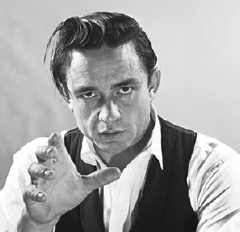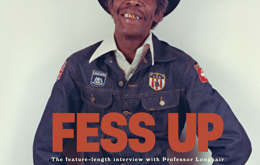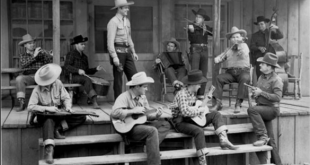Snarling, gun-wielding psycho. Repentant sinner, eyescast heavenward. Pensive uniformed Confederate cavalryman. Those are roles photographer Leigh Weiner cast Johnny Cash in before he forever became`the man in black.’ Cash was one of many singers whose evolving images came to life at the Annenberg Space for Photography in Los Angeles, Country: Portraits of an American Sound, up from May through September. The exhibit highlighted the role photographers play in shaping and selling stars, and while that’s not unique to country, the expressive faces and shiny trappings of country offered photographers choice material to shoot.
Henry Horenstein’s candid photos of `60s honky tonk culture, Dianne Arbus edgy yet more compassionate, contrast to the formal studio work of Walden S. Fabry, a master of lighting who brought a structured dignity to portraits of Hank Williams, Loretta Lynn, and countless others. Had the Annenberg gone further back in time, it could have shown the chimeric Jimmie Rodgers, country’s vaunted father and a hat act of an entirely other kind. Rodgers may have famously been the `Singing Brakeman,’ dressed for the railroader’s role, but he also posed for portraits in bowlers, straw boaters, and Stetsons. Decades before Madonna, Dylan, the Beatles or Johnny Cash, Rodgers played with personas, and not just in the photo studio: he recorded with everything from jazz bands to Hawaiian guitars. The one short film of him (The Singing Brakeman, accessible on YouTube) isn’t nearly as interesting as the portraits or the recordings, in which he offered something for everyone.
Authenticity trumps image for 83-year-old roots music producer Chris Strachwitz, whose life’s work is celebrated in the film This Ain’t No Mouse Music: The Story of Chris Strachwitz and Arhoolie Records. It played for a week in early October at L.A.’s Downtown Independent (you can watch its trailer online), will one day come to DVD, and the double-CD soundtrack (on Arhoolie) is out now. Filmmakers Maureen Gosling and Chris Simon were longtime assistants to Les Blank, whose films (Chulas Fronteras, Always for Pleasure) captured the social context for the roots music Strachwitz recorded. No Mouse Music blends archival footage of the likes of Mance Lipscomb, whose Texas Songster was the first Arhoolie album in 1960, with fresh shots of a still active Strachwitz recording in New Orleans and Appalachia. It’s a joyful display of ways in which film brings depth to music.
Alice Gerrard is a rootsy singer best known for her recordings with Hazel Dickens and Mike Seeger. Her new album, Follow the Music (Tompkins Square), offers a range of both original and traditional songs and a visual surprise: a 1971 photo taken in Japan by then-husband Mike Seeger of a kimono-clad Alice, suggesting another side of an artist Emmylou Harris likens to Sara and Maybelle Carter.
 Baja Review A community newspaper serving Ensenada, Valle de Guadalupe, and Rosarito in Northern Baja California
Baja Review A community newspaper serving Ensenada, Valle de Guadalupe, and Rosarito in Northern Baja California





